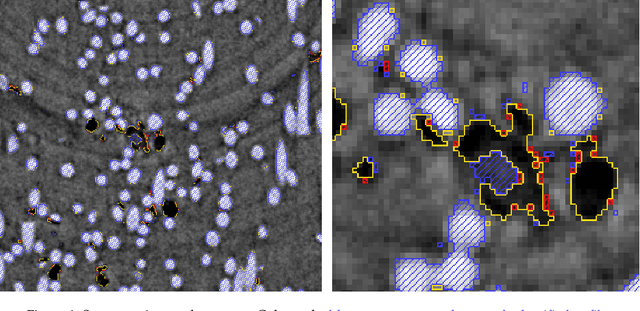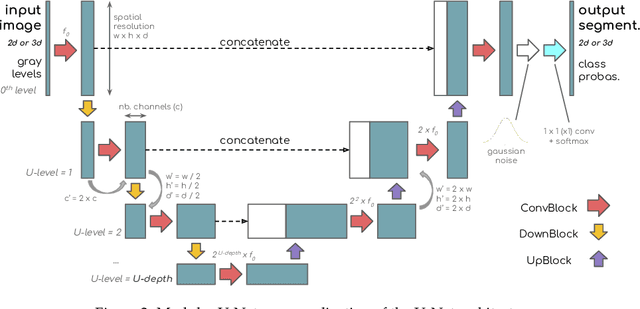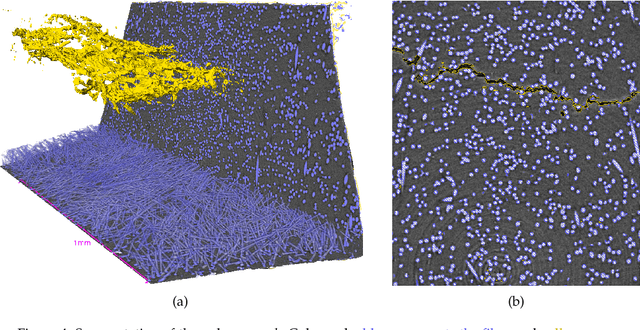A modular U-Net for automated segmentation of X-ray tomography images in composite materials
Paper and Code
Jul 15, 2021



X-ray Computed Tomography (XCT) techniques have evolved to a point that high-resolution data can be acquired so fast that classic segmentation methods are prohibitively cumbersome, demanding automated data pipelines capable of dealing with non-trivial 3D images. Deep learning has demonstrated success in many image processing tasks, including material science applications, showing a promising alternative for a humanfree segmentation pipeline. In this paper a modular interpretation of UNet (Modular U-Net) is proposed and trained to segment 3D tomography images of a three-phased glass fiber-reinforced Polyamide 66. We compare 2D and 3D versions of our model, finding that the former is slightly better than the latter. We observe that human-comparable results can be achievied even with only 10 annotated layers and using a shallow U-Net yields better results than a deeper one. As a consequence, Neural Network (NN) show indeed a promising venue to automate XCT data processing pipelines needing no human, adhoc intervention.
 Add to Chrome
Add to Chrome Add to Firefox
Add to Firefox Add to Edge
Add to Edge